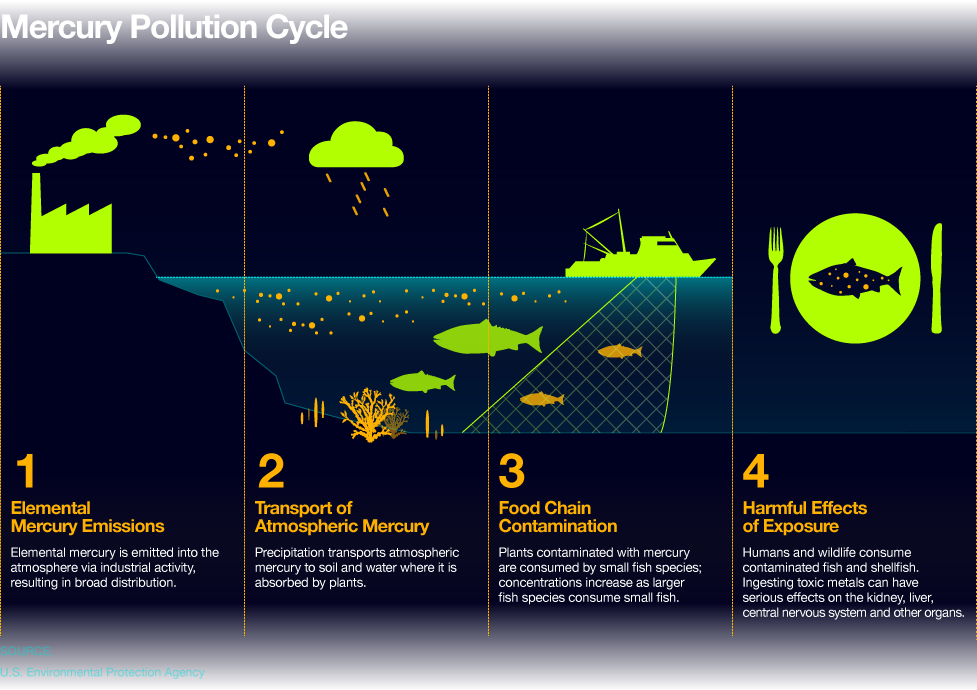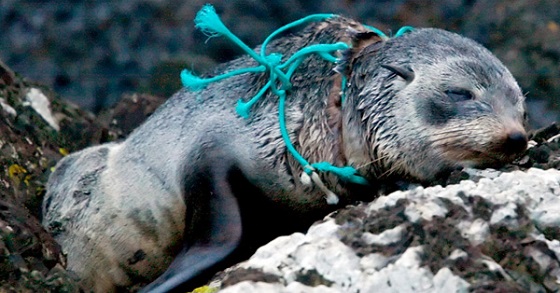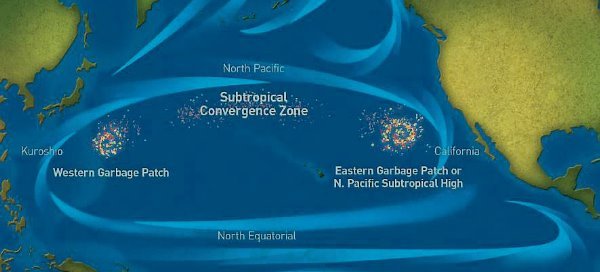Oceans: Measuring Planet Health
Key concepts:
• Ghostnet removal projects
• Marine debris tracker
• Ocean health – indicator of planet health
• Ocean Health Index
• Stanford Professor Rob Dunbar on ocean acidification
• Stanford Professor Steven Palumbi – ocean health and human health
Recognizing that many environmental challenges, from climate change to plastic trash reduction and clean-up, are complex systems problems that require collaboration of experts across disciplines, Stanford Professor Rob Dunbar became Founding Director of Stanford University’s Emmett Interdisciplinary Graduate Program in Environment and Resources (E-IPER), which develops the knowledge, skills, and capacity to address significant global environmental and resource sustainability challenges. Dunbar focuses on air-sea interactions, tropical marine ecosystems, polar climate, and biogeochemistry within the human context of environmental policy directed towards problem-solving to address major global environmental changes.
Rob Dunbar’s TED talk on a Mission Blue excursion summarizes some of his work and stresses his primary concern, ocean acidification. Established by former Chief Scientist of NOAA Sylvia Earle, Mission Blue visits critical ocean habitats that need protection as marine sanctuaries.
Ocean Health Index undertakes an ongoing, quantifiable assessment of the capacity of our oceans to deliver benefits and resources sustainably.
 The ocean is a revealing barometer of climate change, as shown in weather visualizations from Ocean Health Index.
The ocean is a revealing barometer of climate change, as shown in weather visualizations from Ocean Health Index.

The ocean is a global indicator of planet health.
Stanford Marine biologist Stephen Palumbi studies the way humanity and ocean life interact. His insights into our codependence offer ideas for protecting both the ocean and ourselves. Palumbi asks, What’s link between the ocean’s health and our health? He shows how toxins at the bottom of the ocean food chain find their way into our bodies. He describes toxic contamination in the fish market, where consumers were being tricked into buying fish that is not only mislabeled, but unsafe.
Stephen Palumbi speaks at a TED talk on a ship on a Mission Blue trip.
Stephen Palumbi teaches and does research in evolution and marine biology at Stanford University, and has long been fascinated by how quickly the world around us changes. His work on the genetics of marine organisms tries to focus on basic evolutionary questions but also on practical solutions to questions about how to preserve and protect the diverse life in the sea. DNA data on the genetics of marine populations like corals helps in the design and implementation of marine protected areas for conservation and fisheries enhancement. A second focus is on the use of molecular genetic techniques for the elucidation of past population sizes and dynamics of baleen whales, with the notion of recreating a better sense of the ecology of the virgin ocean.
Palumbi has lectured extensively on human-induced evolutionary change, has used genetic detective work to identify whales for sale in retail markets, and is working on new methods to help design marine parks for conservation. His first book for non-scientists, The Evolution Explosion, documents the impact of humans on evolution. His latest is an unusual environmental success story called The Death and Life of Monterey Bay. He also helped write and research and appears in the BBC series The Future Is Wild and the History Channel’s World Without People. Other recent films appearances include The End of the Line and an upcoming Canadian Broadcasting series One Ocean.
Palumbi’s other passion: micro-documentaries. His Short Attention Span Science Theater site received a million hits last year. And his band Sustainable Soul has several songs out, including “Crab Love” and “The Last Fish Left.”
Analysis of global weather changes shows the strong impact of ocean health on climate. But more than revealing climate change, the debris that now litters our oceans is a hazard not only to ocean wildlife, but to all life on earth. The Ocean Voyages Institute, which sponsors Project Kaisei, focuses on the plastic vortices created by plastic debris swirling in these ocean eddies. Via learning in action, expeditions remove marine debris from oceans, shores and rivers to (1) prevent wildlife entanglement, (2) capture large debris before it degrades into tiny, hard to capture pieces, (3) improve ocean cleanup technologies, and (4) inspire others to collaborate globally, sharing technology solutions. The five R’s in education for action: Refuse, Reduce, Reuse, Recycle & Remove. The film below shows an early sampling expedition, which provided the foundation to ramp up for larger scale garbage removal.
The Ocean Voyages Institute, which sponsors Project Kaisei, focuses on the plastic vortices created by plastic debris swirling in these ocean eddies. Via learning in action, expeditions remove marine debris from oceans, shores and rivers to (1) prevent wildlife entanglement, (2) capture large debris before it degrades into tiny, hard to capture pieces, (3) improve ocean cleanup technologies, and (4) inspire others to collaborate globally, sharing technology solutions. The five R’s in education for action: Refuse, Reduce, Reuse, Recycle & Remove. The film below shows an early sampling expedition, which provided the foundation to ramp up for larger scale garbage removal.
Reports claim that the Great Pacific garbage patch is as big as the USA, though NOAA states that its size cannot be measured.

Why focus on the removal of ghost nets?
Fatal entanglement in, and ingestion of, marine debris by marine animals has increased by 40% in the last decade, according to a recent Convention on Biological Diversity Report, over half of the 280 papers reviewed documented entanglement and ingestion, impacting 46,000 individuals and 663 species. As an example of scale in just one region, in 2010, more than 32,000 marine animals from 870 gill nets were recovered from Washington’s inland waters. Many of the nets had been at sea for years. The marine animals entrapped in the nets included:
- 31,278 invertebrates (76 species),
- 1,036 fish (22 species),
- 514 birds (16 species), and
- 23 mammals (4 species).
Former Chief Scientist of NOAA (U.S. National Oceanic and Atmospheric Agency) Dr. Sylvia Earle cites a report from the National Academy of Sciences that over 14 billion pounds (6 billion kilograms) of garbage are deliberately dumped into the sea every year, but that was a 1975 estimate. An update in 2010 suggests 4 – 12 million metric tons. More striking is the fact that we do not know these facts and we are not tracking how the facts change over time.
There is now a Marine Debris Tracker App and increasing awareness of this priority.
See the app @ earthDECKS.org
Saving Our Oceans from Plastic: articles by Zann Gill
- Adverse Health Effects of Plastic
- Aquaria – Informal Learning Network
- Beat the Microbead
- Bibliography: Plastic Roads
- Boyan Slat: Floater Technology for Ocean Cleanup
- Complex Systems Problems
- Cradle to Grave: Plastic Supply Chain
- Dame Ellen MacArthur: The Circular Economy
- Sylvia Earle: Learning for a Plastic World
- earthDECKS Limelights: Companies to Watch
- Enshrouded in Plastic
- Flamingos Signal the Future We Face
- Floating Trash: More than 4x as bad as we thought
- Give the World a Helping Hand: 3D Prostheses
- Global Ocean Sensing
- Industry Response to the Plastic Challenge
- Nature’s Innovators: plastic consumers
- Ocean Debris Network
- Ocean Ingenuity
- Plastic Bank – The Exchange Economy
- Plastic – Climate Change Connection: Israel & UBQ
- PLASTIC: Complex Systems Problem
- Plastic: Drinking Water, Table Salt & Mother’s Milk
- Plastic Footprint – Carbon Footprint
- Plastic-Eating Enzyme
- Plastic Gyres and Social Justice
- Plastic Impact Calculator
- Plastic Pollution Coalition: Campaign vs Single Use Plastic
- Plastic & Public Health: Endocrine Disruptors
- PLASTIC: Overview of National Leadership
- Plastic Roads – Global Innovation Ecosystem
- Plastic Strategies for Innovation
- The Plasticene
- Plastiki: adventure stories & a big message
- Raising Awareness of Plastic Hazards
